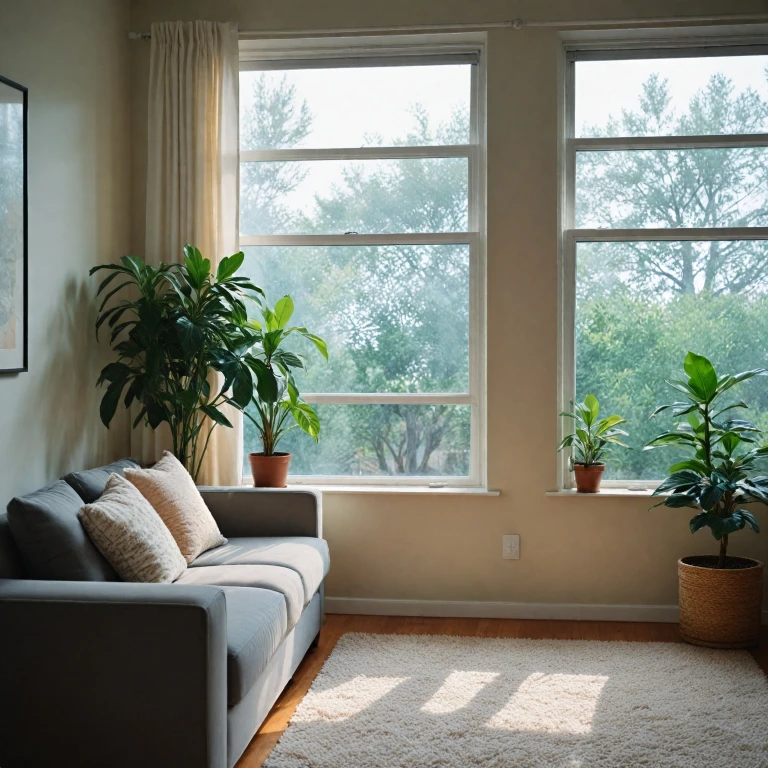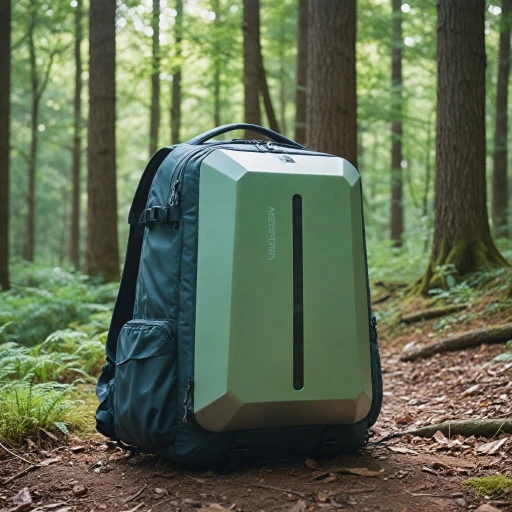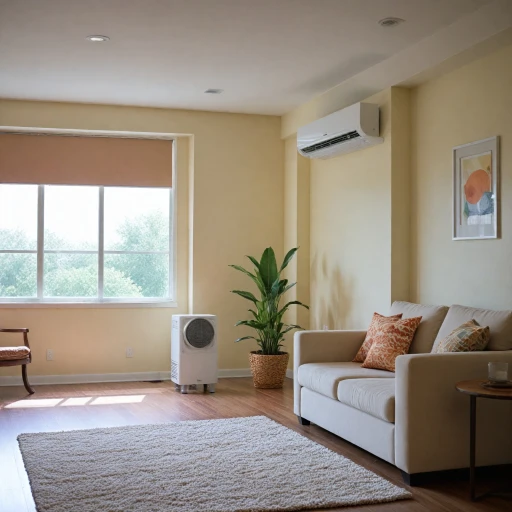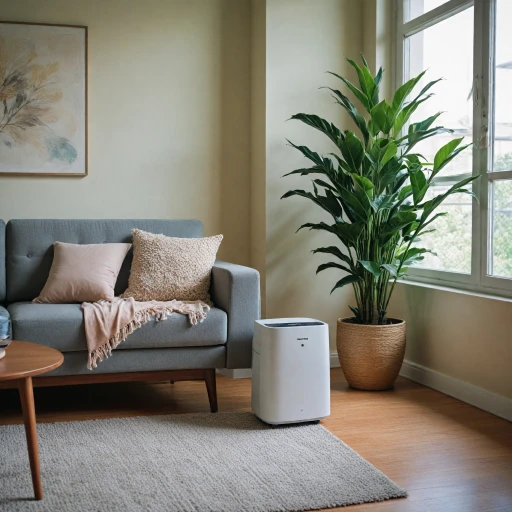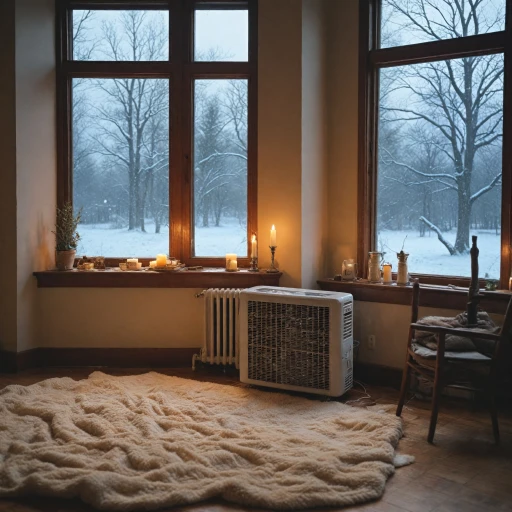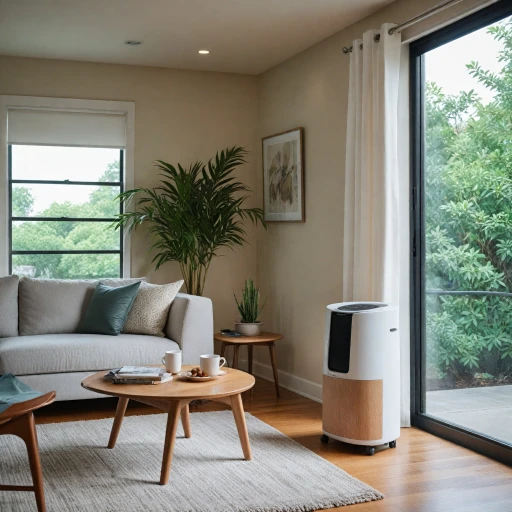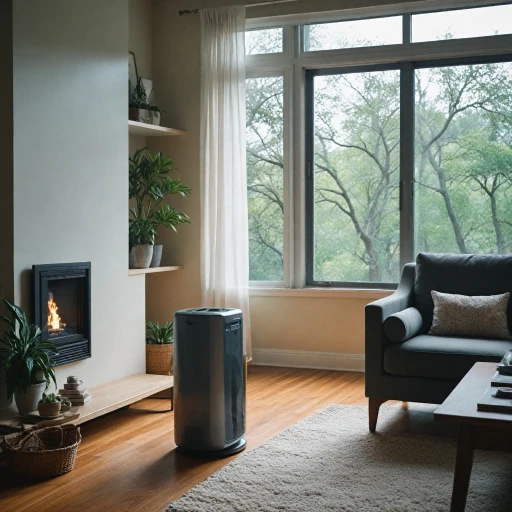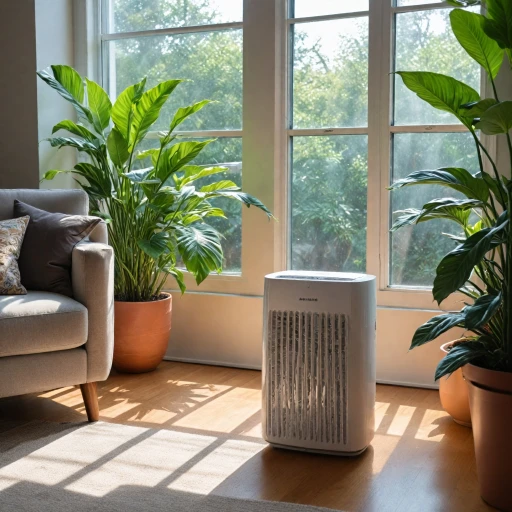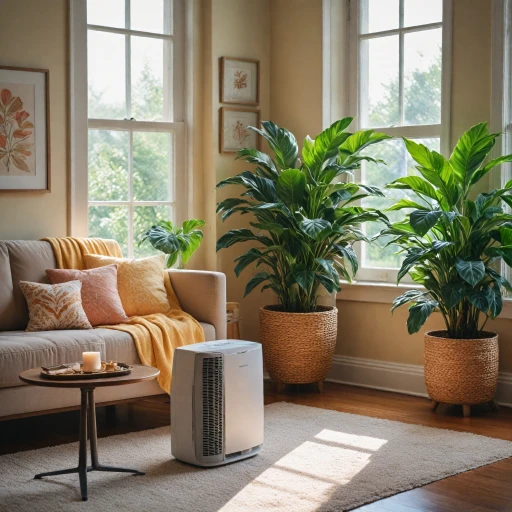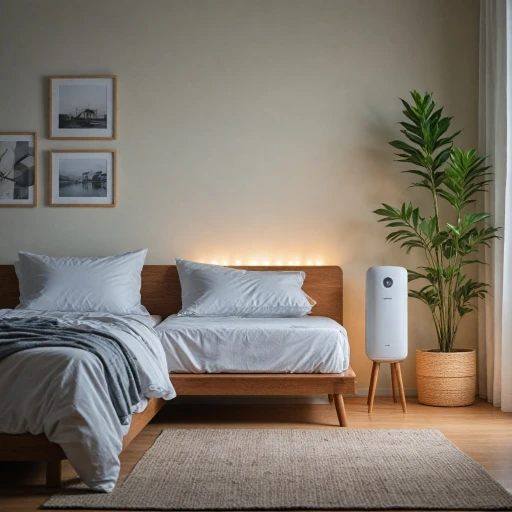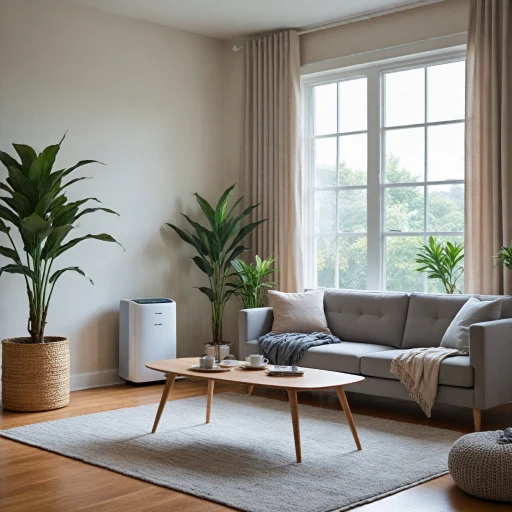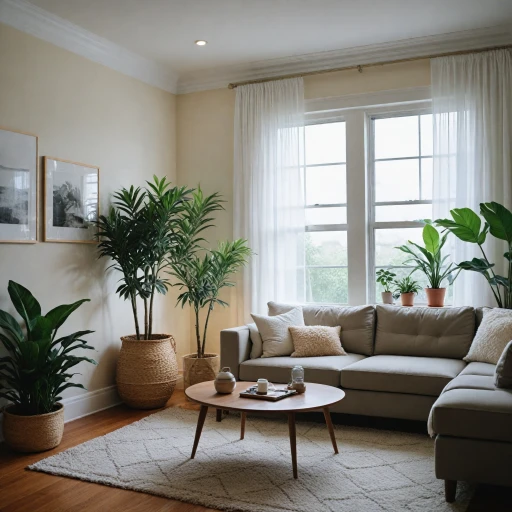
Understanding Portable Heating and Cooling Systems
Embracing Mobility in Climate Control
The concept of portable heating and cooling systems revolves around the idea of flexibility in controlling the climate of a space without the need for permanent installations. These portable units have gained significant relevance in recent years, often due to their convenience and versatile applications. Portable air conditioners are standalone units designed to cool a specific area. They provide a solution for spaces where traditional air conditioning systems might not be feasible, such as rental properties or rooms with limited window access. By design, these systems draw in air from a room, cool it, and then vent the warm air outside through a hose, typically installed in a window.The Dynamics of Portable Air Conditioning
When considering a portable air conditioner, it's crucial to understand the unit's British Thermal Unit (BTU) rating. This measure indicates the capacity of the conditioner to cool a specific area. Models come in a wide range of BTU ratings from compact units suitable for small rooms to more robust options designed to cover larger spaces. The right BTU rating ensures efficiency and optimal performance. Many portable air conditioners also serve dual purposes, offering heating and cooling functions. This versatility makes them attractive for those living in regions where climate control needs can vary dramatically throughout the year. Some popular models, like those in the Pro Series or by Black Decker, feature options like remote control and dual or single hose designs to suit different preferences. Pricing can vary based on the features and capacity of the unit. High-end models often offer additional features and more precise temperature control. In contrast, budget-friendly models may have fewer features but still provide the needed relief from extreme temperatures. For those seeking comprehensive reviews and insights on selecting the ideal system for specific needs, exploring the link on the benefits of a portable outdoor AC unit provides valuable information. Discover versatile benefits for both indoor and outdoor applications. Each model offers distinct benefits and challenges, requiring careful consideration of room size, window placement, and specific climate needs. As we continue to explore this topic, keep in mind the advantages portable systems can offer alongside some of the limitations that might arise.Benefits of Portable Air Conditioners
The Flexibility and Convenience of Portable Air Conditioners
Portable air conditioners are designed to offer cooling solutions wherever needed, providing an efficient and convenient way to maintain a comfortable indoor climate. These units are versatile and can be moved from room to room, enhancing their appeal for homeowners and renters alike.- Mobility and Versatility: With built-in wheels, portable air conditioners can be easily moved from one space to another, whether it's a living room, office, or bedroom. This mobility is particularly beneficial for people who move around frequently or those with a limited budget who want to cool specific areas instead of an entire home.
- Simple Installation: Unlike traditional window or split air conditioners, portable models do not require permanent installation. They only need a nearby power outlet and a window or vent for the exhaust hose. The ease of setup makes them an attractive option for those in rentals, where modifications to the property may not be allowed.
- Cost-Effective Solution: Portable air conditioners come in various price ranges. Notably popular models include the Black Decker and Midea Duo, offering efficient cooling—rated in BTUs—for areas of different sizes. These models can be found on platforms like Amazon, offering numerous options to suit different budgets and needs.
- Multi-Purpose Use: Some portable units not only cool but also provide heating, thanks to integrated heaters for year-round use. This versatility can significantly enhance energy savings, as highlighted in this in-depth exploration of the benefits of portable AC heaters.
- Advanced Features: Modern advancements in portable air conditioners include features like dual hose designs that improve efficiency and cooling time, remote control capabilities for easy operation, and programmable timers for better climate management.
Challenges in Using Portable Systems
Overcoming Potential Hurdles in Portable Climate Solutions
Navigating the world of portable air conditioners presents a few challenges that could impact your experience. It's vital to acknowledge these aspects to make the most out of these versatile systems in your quest for comfort. Let's delve into some common obstacles:- BTU Ratings and Room Size: One of the primary considerations you should keep in mind is matching the British Thermal Units (BTU) of the portable unit to your room size. A mismatch could lead to inefficient cooling, whether the air conditioner feels dwarfed by large spaces or overpowers smaller ones.
- Single vs. Dual Hose Design: Choosing between single hose and dual hose models can be confusing. Single hose units are easier to manage but may compromise efficiency in larger rooms, while dual hose designs like the Midea Duo offer enhanced performance but often come at a higher price point.
- Energy Consumption: BTU portable units vary in energy usage, and while some portable air conditioners promise efficient climate control, the reality is that these appliances can contribute significantly to your electricity bill, particularly during peak heat or cold months.
- Noise Levels: Many models with higher cooling capacities can be louder, which might not be ideal for restful sleep or quiet work environments. It's beneficial to opt for tested units with noise-reduction features or check our guide on finding the perfect quiet portable air conditioner for options.
- Ventilation and Installation Constraints: Consider where the hose will vent. Some rooms may not have suitable windows for the exhaust, and window kits may not fit non-standard windows. Black Decker, White, and other brands often come with adaptable features, but careful planning is crucial.
Choosing the Right System for Your Needs
Identifying Your Cooling and Heating Needs
When selecting a portable air conditioner or heater, it's crucial to assess your specific needs. Consider the size of the room you intend to cool or heat. The BTU (British Thermal Unit) rating is a key factor; it determines the capacity of the unit to effectively manage the climate in your space. For instance, a BTU portable unit with a higher rating is suitable for larger rooms, while a lower rating is ideal for smaller spaces.
Evaluating Features and Functionality
Modern portable air conditioners come with a variety of features that enhance convenience and efficiency. Look for models with a remote control for easy operation, and consider whether a dual hose or single hose design suits your needs. Dual hose models, like the Midea Duo, often offer more efficient cooling. Additionally, some units, such as the Black Decker series, provide both heating and cooling capabilities, making them versatile for year-round use.
Considering Aesthetic and Practical Aspects
While functionality is paramount, the aesthetic appeal of your unit should not be overlooked. Portable air conditioners come in various colors, such as white and black, allowing you to choose one that complements your room's decor. Moreover, consider the hose design and whether the unit can be easily installed in a window or if it requires additional setup.
Budget and Brand Considerations
Price is always a significant factor. Portable air conditioners are available across a wide range of prices, from budget-friendly options to high-end models. Brands like Decker BPACT and Climate Pro offer reliable units that have been tested for performance. Checking reviews on platforms like Amazon can provide insights into user experiences and help you make an informed decision.
Energy Efficiency and Environmental Impact
Finally, consider the energy efficiency of the unit. Models with a high DOE BTU rating are typically more energy-efficient, which can lead to cost savings on your energy bill. Additionally, choosing an eco-friendly model can reduce your environmental footprint, making your choice not only beneficial for your comfort but also for the planet.
Maintenance Tips for Longevity
Maintaining Your Portable Air Conditioner for Optimal Performance
Ensuring your portable air conditioner delivers efficient cooling year after year involves a few essential maintenance practices. With models like the Midea Duo or the Black+Decker BPACT offering advanced features such as dual hose designs or remote controls, keeping them in top shape can maximize their benefits. Here are some practical tips:- Regular Cleaning: Dust and debris can accumulate in the air filters and vents of your portable units, affecting the cooling efficiency. Cleaning the air filter every two weeks can help maintain optimal air quality in your room. Rinse the filter under warm water and let it dry thoroughly before reinserting it.
- Inspecting Hoses: If your model uses a single hose or dual hose system, ensure these are free from blockages. A clogged hose can increase the operating strain, reducing the BTU efficiency and overall cooling power in your space.
- Condensate Management: Different portable models manage condensation in various ways. Models like the Climate Pro series might have self-evaporative systems, but for others, manually draining the tank periodically can prevent overflow problems.
- Periodic Check-Ups: Conducting seasonal inspections before heavy use, especially in warmer months, ensures the unit is ready for the exertion. Pay attention to any unusual noises or inefficiencies that could signal a need for professional service.
- Store Properly During Off-Season: If your cooling needs are seasonal, clean and dry the unit before storage. Find a stable storage space away from extreme temperatures to avoid damage to the components.
Innovations in Portable Climate Control
Revolutionary Changes in Portable Climate Control
In recent years, the landscape of portable air conditioners has seen significant advancements. Manufacturers are quickly embracing new technologies that address previous challenges and enhance both efficiency and user experience.- BTU and Energy Efficiency: With models such as the "Climate Pro Series" and "Decker BPACT," we are witnessing higher DOE BTU ratings that ensure powerful cooling while being energy efficient. This is key in large rooms where efficient energy use translates to cost savings.
- Improved Hose Design: The evolution from single hose to dual hose systems addresses the common issue of warm air seepage. Dual hose designs, seen in models like the "Midea Duo," are more effective in large spaces since they manage intake and exhaust air separately, maintaining a more consistent room climate.
- Smart Features and Connectivity: Remote control functionalities and smart home integrations are now becoming standard. Users can control their portable units from their smartphones or voice assistants, offering convenience and efficient climate management, even from afar.
- Aesthetic Variations: Catering to diverse home décors, available color combinations such as sleek black or classic white ensure that air conditioners blend seamlessly into any room setting. In addition, compact models can fit into tight spaces, keeping both functional and aesthetic needs in balance.
- Multifunctionality: Some designs, like the "Black Decker" series, offer dual functionality—heating and cooling. This versatility makes them applicable year-round, turning the unit from an air conditioner in summer to a room heater in winter.
